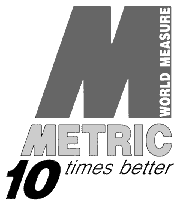Metrication in Jamaica

Jamaica started metrication in the 1970s. However, it was not completed until the 2000s.[1]
Since the 1970s, metric units were introduced into the curriculum of the primary and secondary school systems. The Common Entrance and CXC examinations syllabus use metric units. The Ministry of Education also supports a policy of procuring metric-only textbooks for use in the school system. The informal sector involving vocational, adult literacy and retraining facilities were also being transformed.
Large producers of staple foods such as flour, rice, salt, sugar, chicken and other meats, supply products in metric units. A main objective of the Bureau of Standards, a targeted area of work of its Metrication Department, is to have outlets supplying everyday breakbulk items trade in metric units. While not yet a majority, large and medium-sized wholesale and retail outlets, such as supermarkets and fabric stores, have converted islandwide, particularly in the capital Kingston and adjoining urban centres.
Current non-metric usage
Most locally packaged goods and export commodities, traditional and non-traditional, are labelled in metric units, although US labelling regulations pose a constraint with their requirement for the use of dual units on goods exported to the country. A sticker is often used to denote the US customary units on products exported to the United States
References
- ↑ "Metric usage and metrication in other countries". Colorado State University.
| ||||||